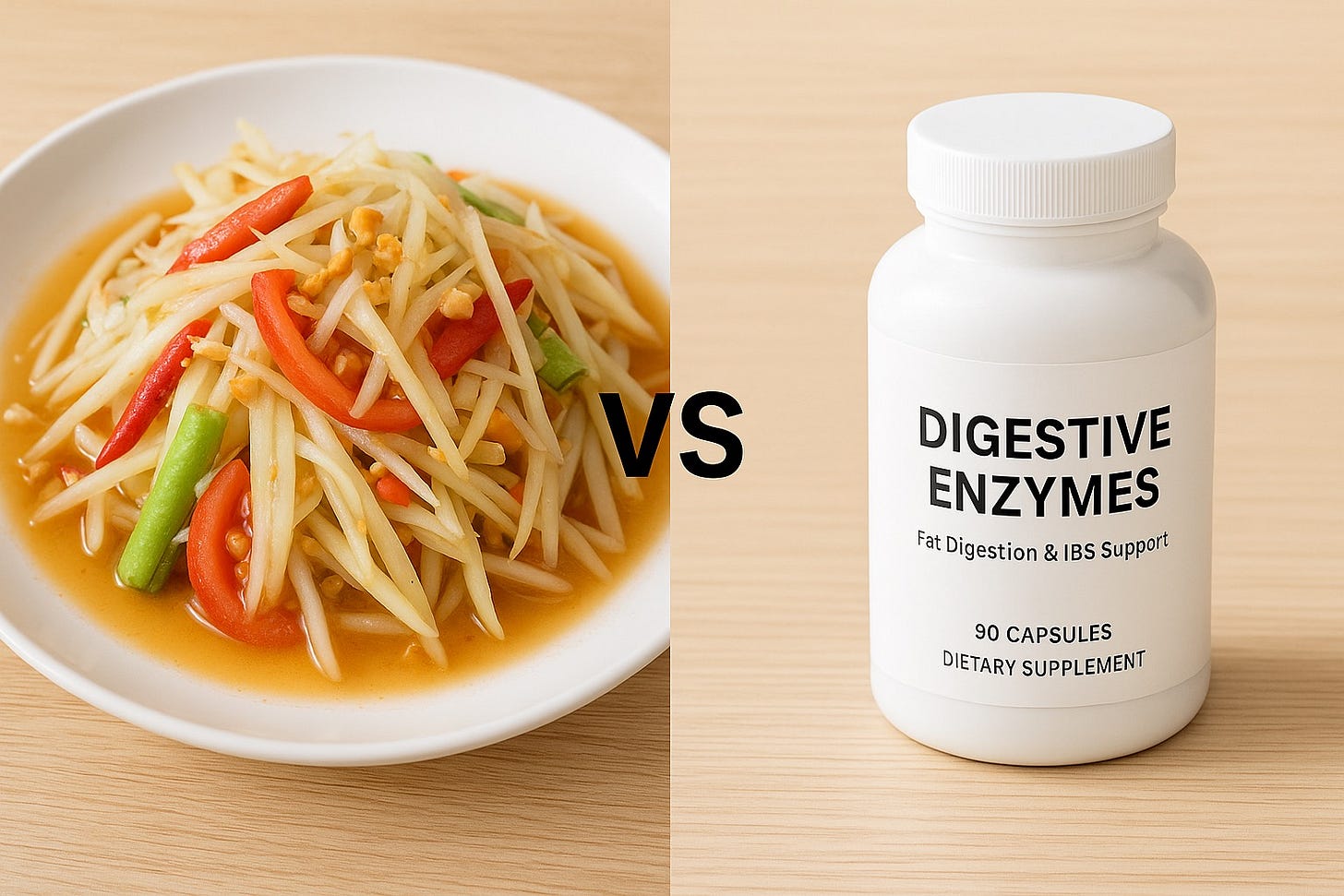From Mortar to Metrics: Why My Grandma’s Papaya Salad Still Outperforms Most Supplements
I grew up with the sound of a mortar and pestle echoing through the kitchen.
My grandmother made Som Tum — Thai green papaya salad — almost daily. She didn’t follow recipes or count calories. She shredded unripe papaya by hand, added chili, garlic, fermented fish sauce, a squeeze of lime, and pounded everything together with rhythm and intuition.
One day I asked her, “Why crush the papaya like that?” She smiled and said, “It helps your stomach.”
I thought it was about taste. I didn’t realize it was ancestral biochemistry.
Years later, I learned that raw papaya is rich in papain, a digestive enzyme that helps break down proteins. And the pounding? That wasn’t just culinary style — it was breaking cell walls to activate those enzymes.
My grandmother was performing a metabolic intervention in a mortar—long before wellness brands were selling it in capsules. 🥗
Decades later, I found myself in Silicon Valley, surrounded by nutrition tech, AI, and endless biohacking trends. Despite all this innovation, I noticed something ironic:
We have more supplements than ever… and more confusion than ever.
💊 Fat-burning pills.
💊 Digestive enzyme blends.
💊 IBS relief capsules.
All promising results, yet rarely tested in the real world.
At the same time, ancient dishes like papaya salad — raw, enzyme-rich, probiotic, fiber-dense — were being overlooked.
Why? Because they weren’t quantified.
That’s when it hit me: 🧠 “Our ancestors didn’t lack science. They lacked sensors.”
That insight led me to build Tastermonial — a platform that lets food and supplement brands run real-world trials using wearables, structured logs, and AI to validate health claims.
We track how real meals (and supplements) impact blood sugar, satiety, bloating, and energy — in real people, not just in lab slides.
Not to replace ancestral knowledge, but to honor and revalidate it.
We’ve helped brands measure how their “digestive enzyme” compares to a whole-food intervention. And we’ve shown consumers that what their grandmother made for digestion might actually outperform the bottle they’re holding.
But this isn’t just about science or product validation.
🍽️ It’s about reconnection.
Because sometimes, we forget.
We forget how to feel. We lose our sense of connection to food. We eat by habit or trend, not by feedback.
And that’s where I believe technology can help — not to override instinct, but to bring us back to it.
Wearables, sensors, and platforms like Tastermonial are not the destination. They’re the mirror.
They help us pause. Reflect. Ask: “How did that make me feel?”
My grandmother didn’t need a CGM to know her food worked.
But now, maybe we do — just to remember how to listen.
In the end, wellness isn’t about what’s new.
It’s about what’s true — and learning how to see it again.
🙏 Thanks for reading.
I’m building a community that bridges traditional food practices with modern metabolic science — grounded in lived experience and powered by data. Want to follow the journey? Subscribe to my Substack.




